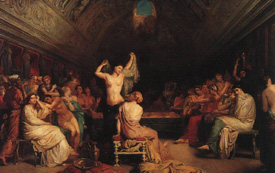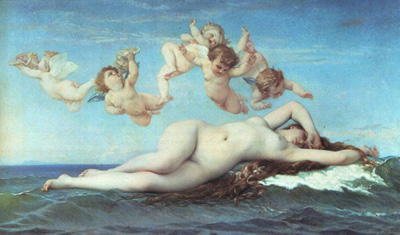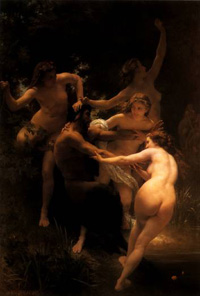Thus, academic artists painted themes borrowed from religion, classical mythology, and history. Scenes of landscapes or (worse) of everyday moments in 19th century life were considered too insignificant to be the subject of great art. From our perspectives many of the paintings of the period seem quite explicitly erotic and often degrading to women, but within the world of official painting at the time it was believed that they were uplifting examples of pure beauty.
Acceptance within this system rested largely on the ability to master the demanding technical requirements of the “realistic” style dominant at the time. Painters were expected to create the impression that their work

Théodore
Chassériau (1819-56) The Tepidarium (1853)

